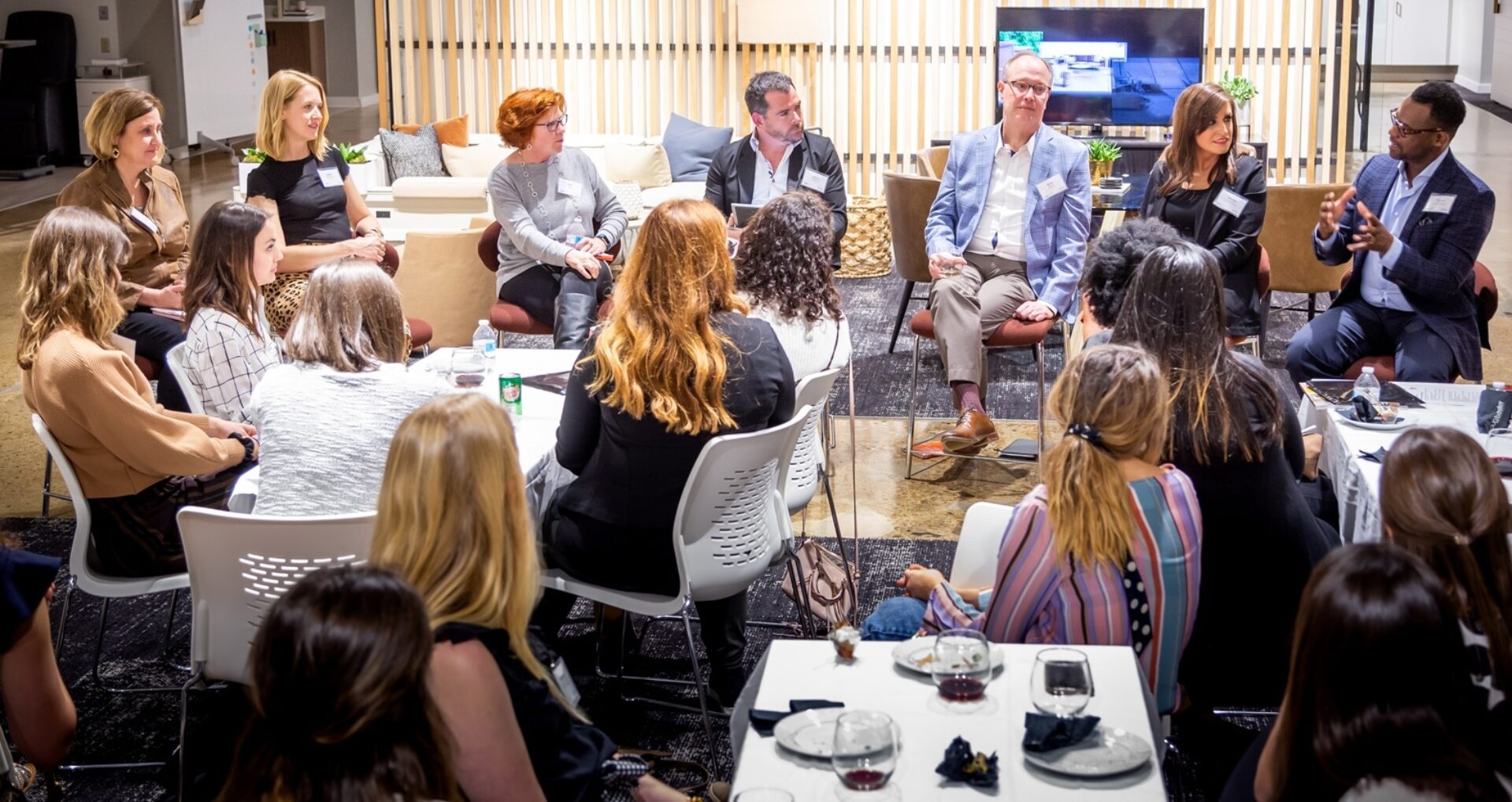For the 2020 IIDA Student Roundtable we convened a group of experts in various fields of design to describe their roles and give advice and guidance to emerging and student designers. The following section of the report discussed how exploring and understanding all of the different opportunities within the field of design is key to finding your passion and building a strong professional network.
Jennifer King, IIDA, a project manager at DLR Group | Staffelbach, describes her journey into the interior design industry as a leap of faith—one that ultimately allowed her to pursue her calling. After selecting “interior design” as a major at Texas Tech University purely on a whim, King realized that design is what she wanted to do with the rest of her life.
“What I know of my position now, I did not understand it then,” she says. What she did understand, however, was that interior design felt right. And it wasn’t just the creative process that got her invested, it was the interpersonal relationships and melding of the minds that went into every aspect of the profession. As a project manager, King experiences all stages of a design project from start to finish. This gives her unique insight into how design teams cooperate internally and externally, and what it takes to bring a design idea into the real world. A design project doesn’t just miraculously come into being; it takes a team of individuals with unique and necessary roles working together to achieve a singular goal.
Sarah Merriman, the design manager of corporate facilities at Starbucks, says that this complex system isn’t always obvious. “For my internal clients, I need to show them that projects don’t happen overnight; I have to continuously educate them on the process for every different role on the design team.” So, what exactly does this process look like? It’s complicated, but according to Timothy B. Jackson, PMO director of Cushman and Wakefield, it is often a controlled chaos that gets the job done. He notes that the systems and inner workings of design aren’t always easy to understand, even for those working internally: “When I was just starting out, I wish that I had a forum like this so that I could hear how people went from degree to design and to hear them describe the dynamics of their roles and relationships on the job,” he says.
As someone that has frequently worked in a project manager role, Jackson wants designers and architects to “talk to me like I am five years old so that I can communicate that information with different people at different levels.” There are often many players on any given design team, from project managers and designers to contractors, sales managers, and creative directors. When working on a team that includes a plethora of roles, being as direct and forthright as possible every step of the way ensures that members are all on the same page, fully understand, and can effectively communicate information about a project by using their own vocabulary. Jackson himself is not a designer and focuses on the management, scheduling, and oversight of project delivery, boasting a proven track record of ‘on time
and on budget.’ “My perspective is different from a designer’s,” he says. “Though I am also thinking about the look and feel, I am focusing on the cost and on time management. And when I tell you I need something…I need it faster than that.”
For Susan Stinnett, vice president of sales for Commercial Officer Interiors, working closely with a wide range of people is intrinsic to her sales-oriented role. “I provide furniture solutions to clients, and I communicate and collaborate with anyone from raw materials producers to project managers and product consultants,” she says. “The collaboration never stops.” Her job is all about collaborating with the diverse teams that are involved in every step of the process needed to make environments come to life. No matter who you are in the design world, you are part of a larger ecosystem with many different parts that determine and define design excellence in their own way. Finding your place and discovering where you and your skills best fit is a crucial part of your overall professional experience.
Read the full IIDA Student Roundtable Report - It Takes a Village: The Integral Roles of Design, here.
